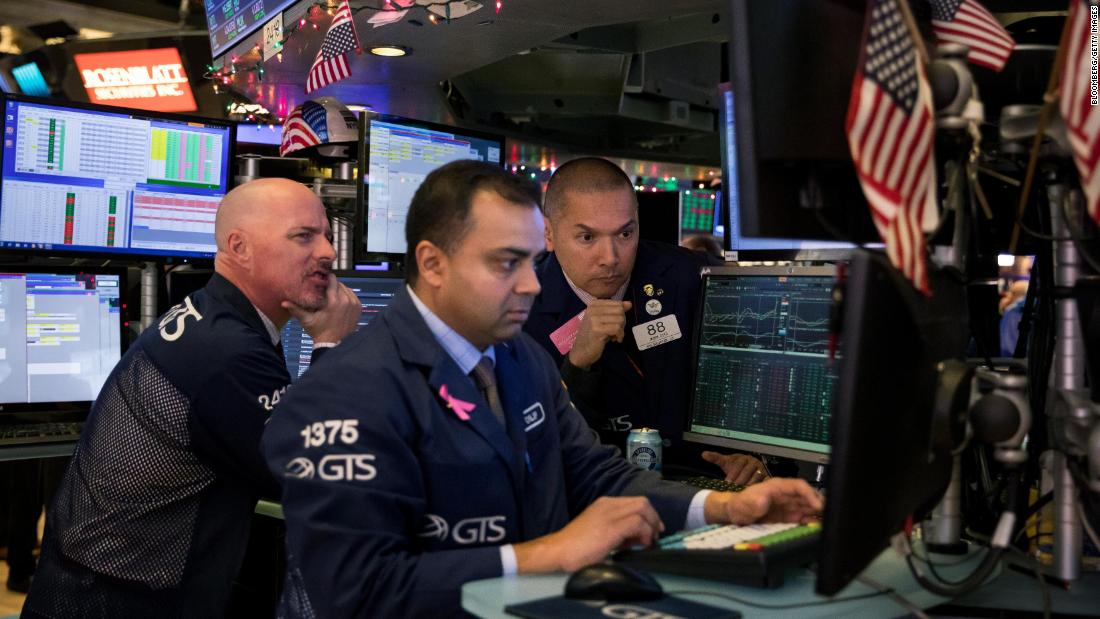[ad_1]
The Dow dropped 799 points, or 3.1%, on Tuesday. At one point, the index was down 818 points. The S&P 500 declined 3.2%, while the Nasdaq tumbled 3.8%.
“People are still very concerned about the trade war,” said Dan Suzuki, portfolio strategist at Richard Bernstein Advisors. “Financial markets are increasingly showing signs of fear of a recession.”
The selling erased nearly $800 billion from the S&P 500’s market value, according to S&P Dow Jones Indices. Even though it was the Dow’s fourth-biggest point decline in history, the percentage loss doesn’t even crack the top 25 from the past decade. All three major indexes remain positive on the year.
Trade war fears persist
President Donald Trump did not help Wall Street’s trade war worries on Tuesday. Trump said that he would “happily” sign a fair deal with China but also left open the possibility that the talks will fail.
“President Xi and I want this deal to happen, and it probably will,” Trump tweeted. “But if not remember… I am a Tariff Man.”
Those words aren’t likely to bolster confidence among investors already worried about the negative consequences of the trade war. Steel and aluminum tariffs have lifted raw material costs and caused disarray in supply chains. And uncertainty about trade policy makes it very difficult for companies to make investment decisions.
“This tariff situation still looms large over the market,” said JJ Kinahan, chief market strategist at TD Ameritrade.
Treasury Secretary Steven Mnuchin acknowledged that the market turbulence reflects uncertainty about the US-China trade truce.
“The market is now in a wait-and-see,” Mnuchin said at the Wall Street Journal’s CEO Council annual conference in Washington. “The market is trying to figure out is there going to be a real deal at the end of the 90 days or not.”
Recession gauge flashes yellow
The difference between the 10-year and two-year Treasury yields shrank on Tuesday to the smallest since just before the Great Recession. And the less closely watched gap between three and five-year Treasury yields inverted on Monday.
“Inversion is usually the first sign of an economic slowdown,” said Kinahan. He cautioned that further evidence is needed and signs of a recession are not evident in corporate earnings.
“It’s playing with fire to be too tight and risk an inversion because you don’t know what the outcome will be,” Bannister told reporters on Tuesday. “Even if the Fed pauses, they may have already done too much.”
Banks get crushed
A flattening yield curve and slowing economic growth hurt the profitability of banks.
S&P Global Ratings warned in a report published on Tuesday that “signs of cooling could be emerging” in the US economy. The credit ratings firm raised its odds of a recession in the next 12 months to 15% to 20%, up from 10% to 15% in August. Citing higher interest rates and the fading impact of tax cuts, S&P expects US GDP growth to slow from 2.9% this year to 1.8% in 2020.
“This cycle is either in–or fast-approaching–its latter stages,” S&P said.
But Suzuki, the Richard Bernstein Advisors strategist, cautioned that the markets could be overreacting. He pointed to strong corporate profits and the fact that the yield curve has not yet inverted.
“We don’t see signs of an impending recession,” Suzuki said. “There is a widening gap between market fear of a deterioration in the fundamentals and the actual fundamentals themselves.”
US stock markets will be closed on Wednesday to honor President George H.W. Bush.
–CNN’s Donna Borak contributed to this report.
[ad_2]
Source link


